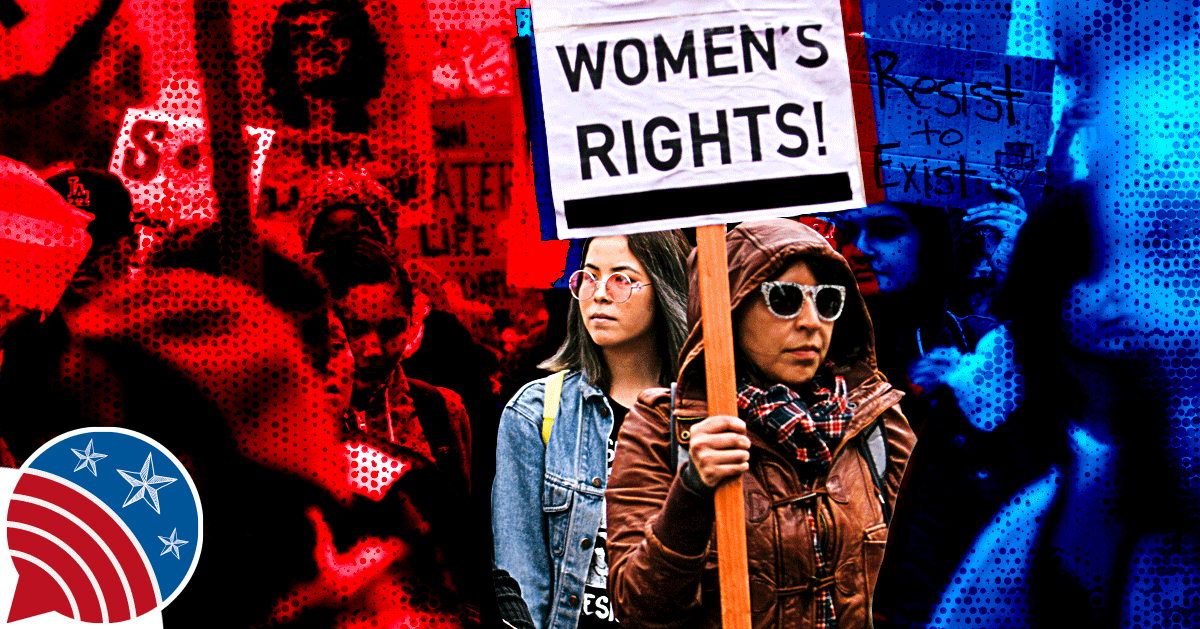
Women’s Rights
How far have women’s rights come and how much further do we need to go? Explore seminal events, cases, and texts such as the Seneca Falls Convention of 1848, Minor v. Happersett (1875), Roe v. Wade (1973), Dobbs v. Jackson (2022), and the Equal Rights Amendment. Prepare to engage in discourse around what needs to be done to secure women’s equal rights once and for all.
Overview
Timeframe: 3-4 days / 50-minute sessions
60-Second Civics Podcast:
- The Seneca Falls Convention
- The Seneca Falls Declaration of Sentiments
- Minor v. Happersett
- The Abortion Debate and Fundamental Rights
- The Equal Rights Amendment
Beyond the Legacy Video:
Scholar:
Dr. Lisa Tetrault
Carnegie Mellon University
Participants will learn about the constitutional underpinnings of the fight for gender equality in America by viewing and discussing videos, podcasts, and other media, as well as closely reading the Declaration of Sentiments, to engage in a civil discourse model to expand their perspectives on the value, purpose, and lasting impact of women’s suffrage today.
- "born equal"
- "equal station"
- "great precept of nature"
- human rights
- "inalienable rights"
- laws of nature
- "sacred right"
The Seneca Falls Convention was a historic event in the United States that took place in Seneca Falls, New York, from July 19 to July 20, 1848. It was the first women's rights convention held in the country and marked a crucial moment in the early women's suffrage movement. Two prominent activists, Elizabeth Cady Stanton and Lucretia Mott, primarily organized the convention along with several other dedicated reformers.
The main purpose of the Seneca Falls Convention was to address the social, political, and economic inequalities faced by women during that time. The attendees, both men and women, gathered to discuss and advocate for women's rights and suffrage—the right to vote.
One of the significant outcomes of the convention was the drafting of a seminal document known as the Declaration of Sentiments. This document, which was closely modeled after the United States Declaration of Independence, outlined the grievances and demands of women, asserting that all men and women are created equal and that women should be granted the same rights and privileges as men.
The Declaration of Sentiments specifically called for women's suffrage, equal educational opportunities, the right to own property, and an end to the societal restrictions that limited women to domestic roles. It also highlighted women's lack of legal rights, particularly in matters of marriage and divorce.
The Seneca Falls Convention was not without controversy, as advocating for women's rights was considered radical and controversial at the time. Nevertheless, the event was a critical milestone in the women's suffrage movement, inspiring and laying the groundwork for future activism and advocacy for gender equality.
The convention's impact extended beyond its immediate time frame, igniting a spark in the fight for women's rights and motivating many activists to join the cause. The efforts and determination of those who attended the Seneca Falls Convention paved the way for subsequent women's rights movements and played a vital role in eventually leading to the 19th Amendment to the U.S. Constitution, which granted women the right to vote in 1920.
Additional Resources:
Students demonstrate their understanding of women’s suffrage and gender inequality by making real-world connections between the context surrounding the Declaration of Sentiments and that of the present-day United States and the lasting impact of women’s suffrage today.






